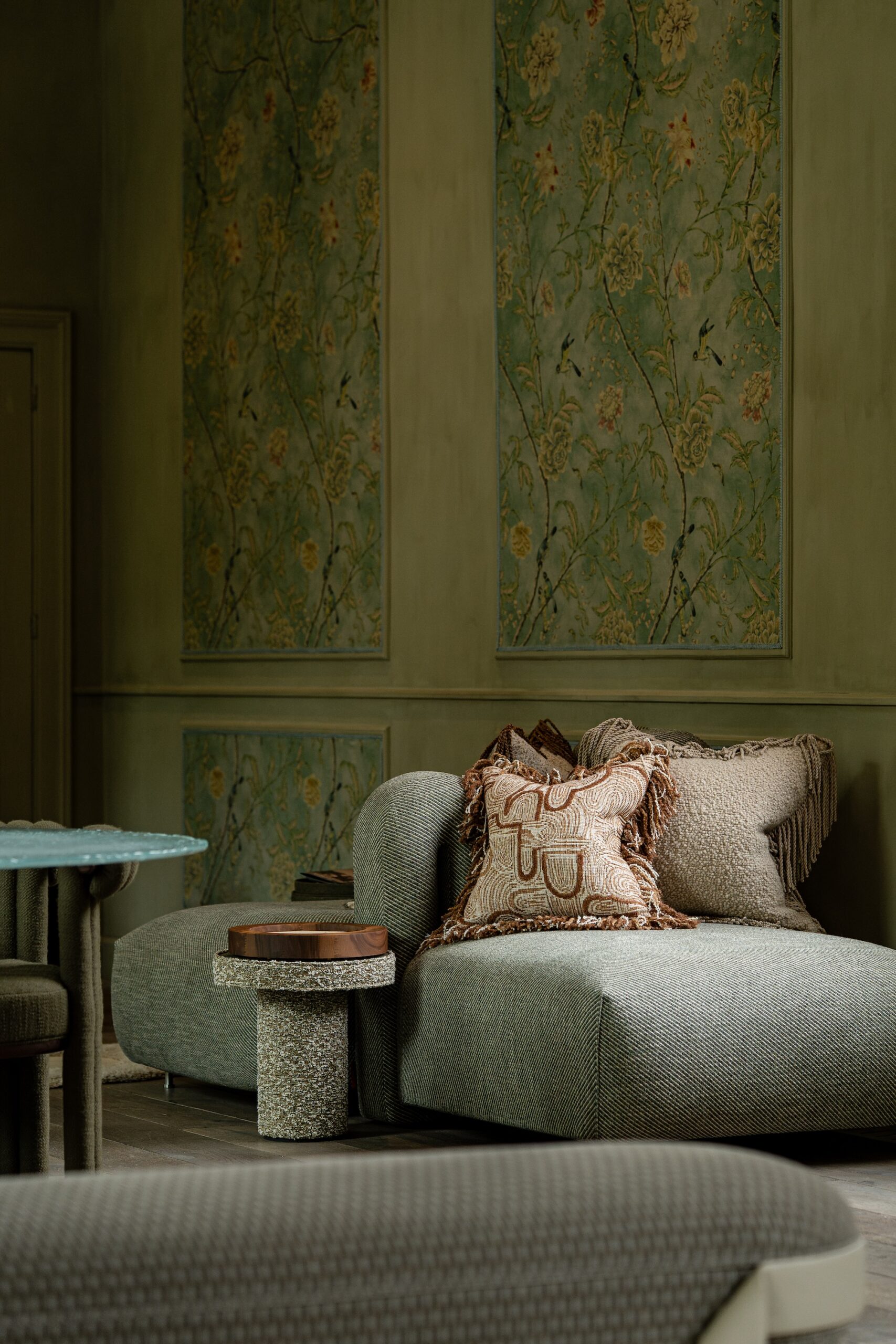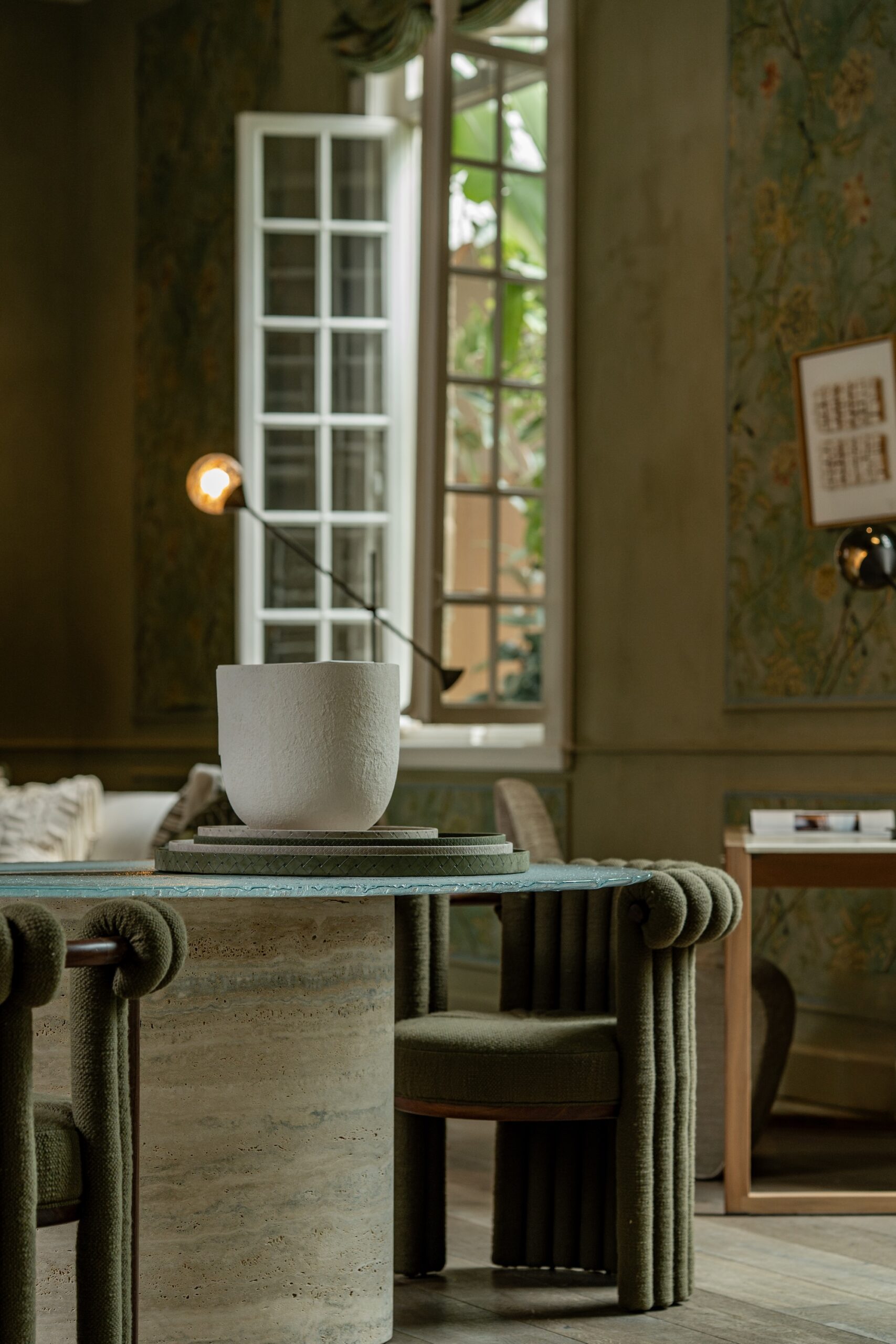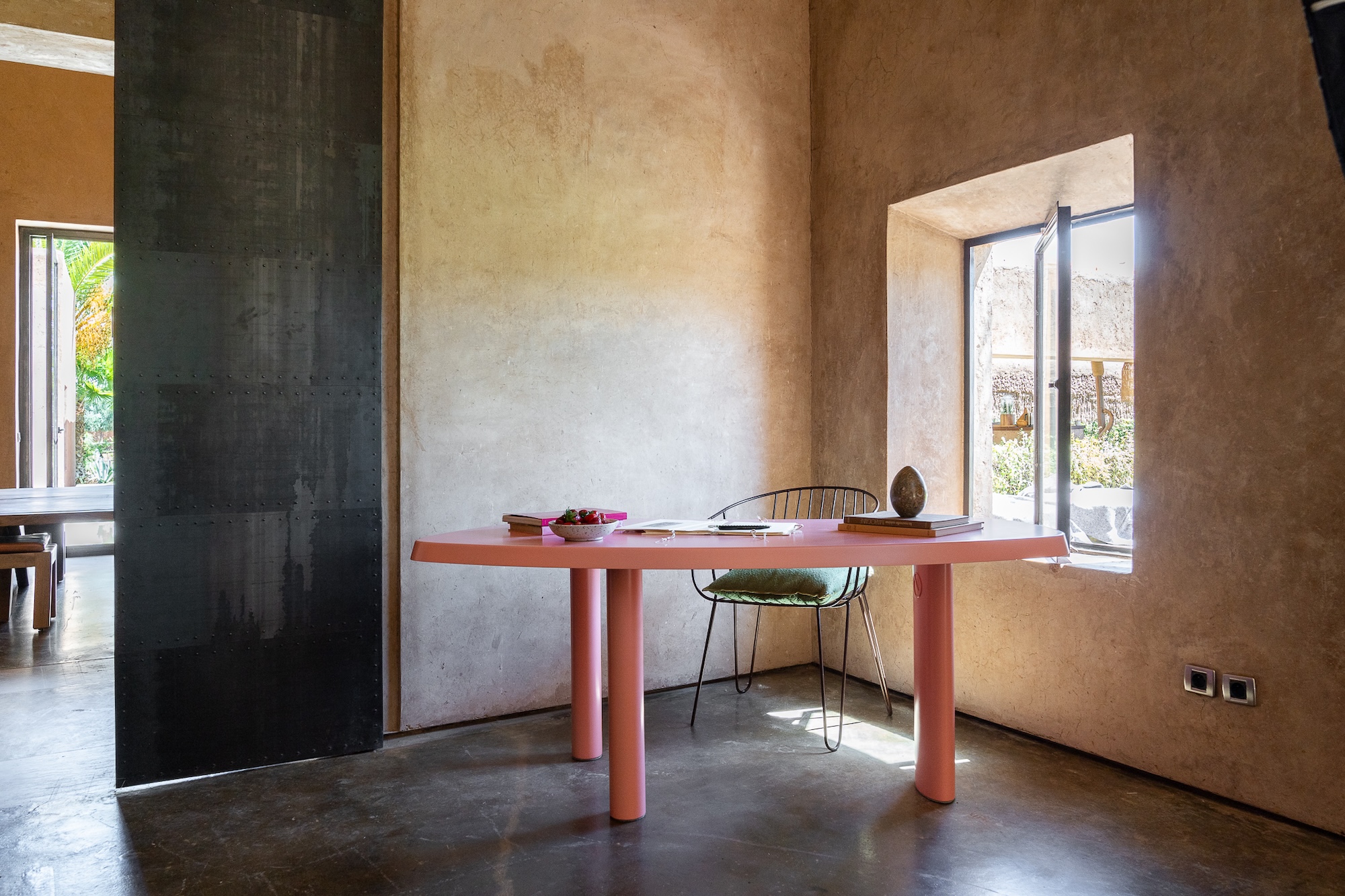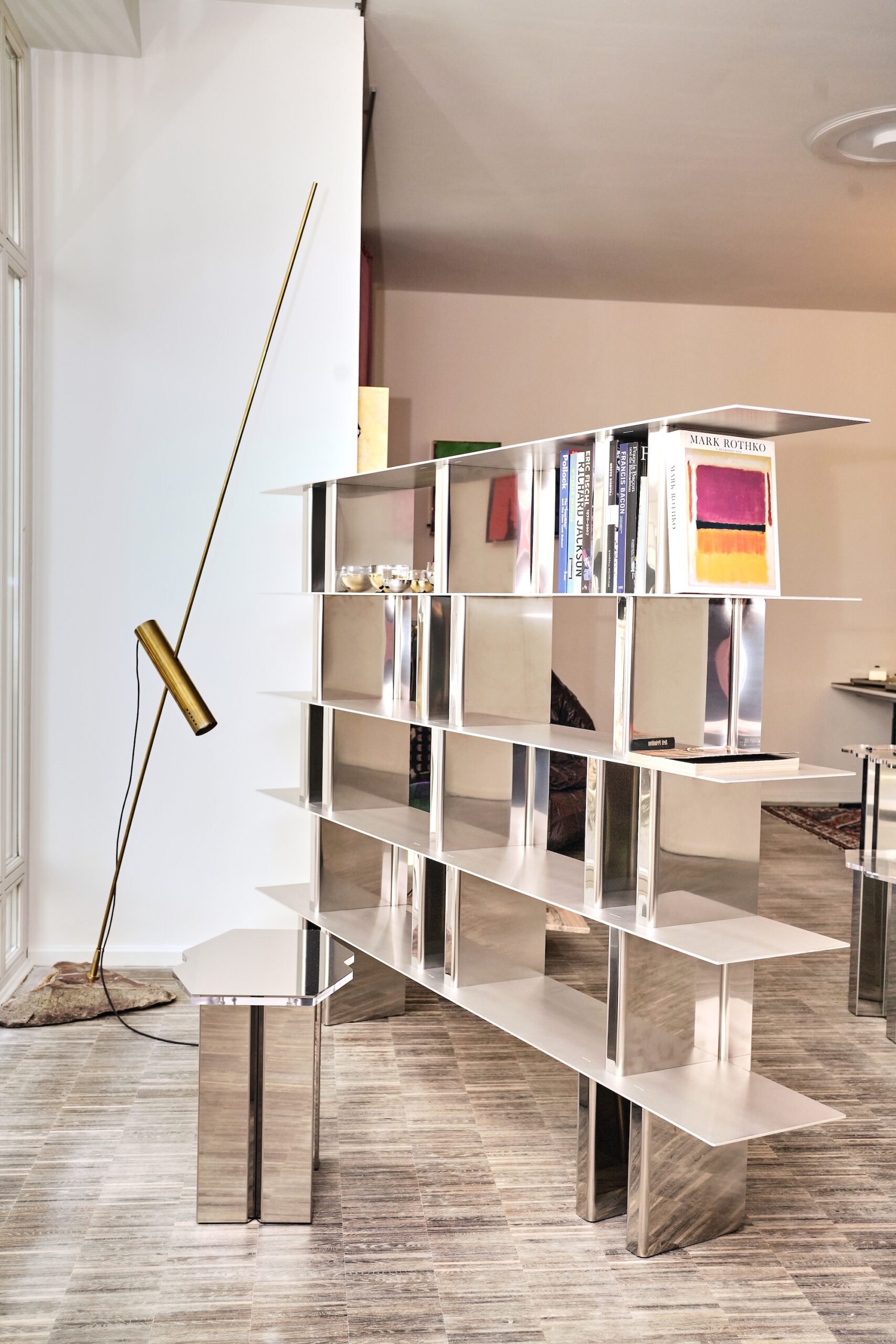Antwerp Design Week 2025: The Future Is Local
I was invited to join Antwerp Design Week’s first official press tour, a group of just four, given the time and space to experience the city’s design culture up close. We visited studios, showrooms, and exhibitions that proposed a different model for what a design fair could be: slower, and more human in scale.
While Milan’s Salone del Mobile and Copenhagen’s 3daysofdesign have ballooned into international media frenzies, Antwerp is carving out a more deliberate experience. Across two well-organized days, we encountered a range of perspectives, from established brands to emerging voices, all connected in craft and locality. Here are a few of the experiences that stood out:
We began our tour just outside the city, at the Royal Botania Glass House. Their expansive showroom is surrounded by greenery, a fitting setting for a brand focused on outdoor furniture that feels integrated with its environment. During a presentation by Interior Pulp magazine, we were introduced to a presentation of themes shaping the outdoor category: the nomadic garden and collectible outdoor design, among others. Both signal a shift in how we think about exterior spaces, not just as extensions of the home, but as expressive environments in their own right.
Next, we visited Ethnicraft, a Belgian brand with production in Indonesia and a 20,000-square-meter headquarters just outside Antwerp. The scale is impressive, but what stood out was their approach: each piece begins as a handmade model in the in-house workshop, then gets 3D scanned and reproduced abroad. It’s a reversal of the typical design-to-manufacture process, and it’s what gives their mass-produced furniture its distinctly handcrafted feel. Ethnicraft’s in-house designer, Alain van Havre, spoke to us about wanting to reconnect the furniture he designs to its material, not in a nostalgic way, but as a form of respect. His designs aren’t overly refined; instead, they retain traces of the tree, of the maker’s hand, of something imperfect on purpose. He avoids calling it “organic,” but the work speaks clearly of bodies, growth, and structure – what he explained is a kind of standardization of imperfection.

If I were furnishing a hotel, I’d use Ethnicraft from top to bottom. The collection is clean-lined, sculptural, and quietly luxurious without slipping into difficult-to-replicate minimalism. The in-house design team did an exceptional job with the interiors throughout the showroom.
Photography by Tijs Vervecken
Later, at the Botanic Sanctuary Hotel, we were introduced to Evolution21, a family-owned Belgian furniture company based in Mechelen, a historic hub for furniture-making since the 18th century. Known for its balance of tradition and innovation, the brand brings contemporary designs to life by combining precise industrial processes with hand-finished detailing. Their work, led in part by creative director Karine Bonjean, reflects a commitment to material and sophistication that resonates in private homes as well as hospitality spaces. The shapes were of-the-moment, curvy and voluminous, upholstered in luxurious mohair and textured fabrics.

Photography by Pilar Shoots

On the final day, I joined the Young Creative Walk, a two-part exhibition showcasing the work of independent Belgian designers. Most of the pieces were thoughtful and pared-back. Simplicity was a common thread, with a strong focus on materials and form.
One standout was Marie Vansteenkiste, also known as Objects by Marie, presenting glossy tables varnished in vibrant candy colors, some with inlay terazzo. She describes her tables as more than functional surfaces; they’re meant to encourage connection and playfulness in interiors.

Photography by StudioSixtyThree
Young Belgian design studio Atelier Bloc presented a refined collection using shou sugi ban, a traditional Japanese technique of charring wood. The collection is a balance of restraint and scale that emphasizes the character of the material without overworking it.

Atelier Bloc’s monolithic Corvus table was a stand-out in the Young Creatives exhibition. Photographer is Marleen van Landeghem.
Berlin-based An Object showed their OneTwoOne shelving system — a modular design made up of repeating units that form vertical rhythms when filled. With its reflective finish and layered configuration, it felt sculptural, contemporary with a Bauhaus influence.

Photography by Pilar Shoots
Similar to Objects by Marie, club BONHEUR showed us a playful side of Belgian design with their unique and colorful tufted lamps. Founded by two friends with a a passion for crafts and design, one focusing on ceramics and the other with textiles.

Photographer is Pilar Shoots
It was an exciting and quick trip to Antwerp with a presentation that showed us how the local design can be both mass-produced and handmade with equal care. With the design world being more and more dominated by scale, Antwerp made a case for keeping things intimate. The week wasn’t crowded, or loud, or over-programmed. It felt measured, in pace and in purpose.